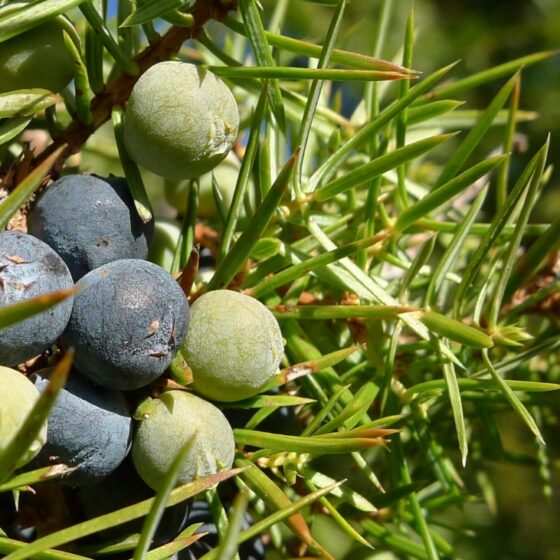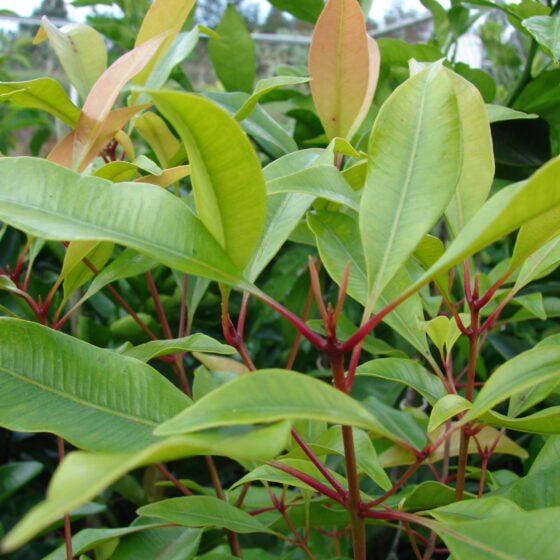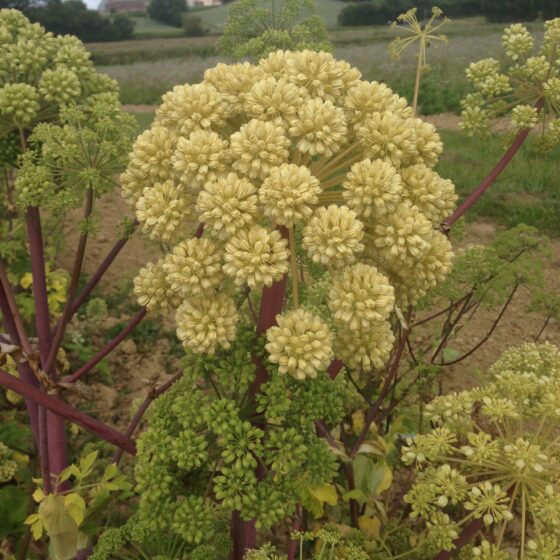
Cassia China
Cinnamomum cassia
General data
Harvest Calendar
- J
- F
- M
- A
- M
- J
- J
- A
- S
- O
- N
- D
Product details Fragrance side
Cinnamon leaf essential oil is mainly used in spicy fragrances and as a modifier in orientaal perfumes. It is also found in some woody scents.
About
Chinese cinnamon, also called Chinese cassia, is an evergreen tree, often pruned to the size and shape of a shrub to facilitate harvesting. Originally from China, it grows semi-wild or is cultivated in the southeast provinces of Guangxi and Guangdong. The tree’s leaves are typical of the genus Cinnamomum: heavily veined, smooth, and oval. It belongs to the same family as Howood. The small, pale-yellow flowers produce fruits the size of an olive.
Chinese cassia has been known to mankind for nearly 5,000 years. Descriptions of its uses could be found in the Chinese Pharmacopoeia under Emperor Shen Nung around 2,700 B.C. Highly favored by the imperial court, it was also used in traditional cooking. It came to be known by its “cinnamon” name and is mentioned in Sanskrit texts and the Bible. This common name comes from the Greek kinnamon, kinnamômon, meaning “spice of China.” As Arab merchants travelled the Spice Road, they took great care not to reveal their supply locations, and this contributed to the legends surrounding the cinnamon tree. People in ancient times were fascinated with it: It was said that it could only take root in extraordinary locations. In the Song of Songs, Solomon mentioned a sensual garden fragrant with nard and saffron, cassia and cinnamon.
The trees reach maturity at the age of 10 to 12 years. The leaves are harvested, dried, and then distilled.
Fragrance side
Cinnamon leaf essential oil is mainly used in spicy fragrances and as a modifier in orientaal perfumes. It is also found in some woody scents.
About
Chinese cinnamon, also called Chinese cassia, is an evergreen tree, often pruned to the size and shape of a shrub to facilitate harvesting. Originally from China, it grows semi-wild or is cultivated in the southeast provinces of Guangxi and Guangdong. The tree’s leaves are typical of the genus Cinnamomum: heavily veined, smooth, and oval. It belongs to the same family as Howood. The small, pale-yellow flowers produce fruits the size of an olive.
Chinese cassia has been known to mankind for nearly 5,000 years. Descriptions of its uses could be found in the Chinese Pharmacopoeia under Emperor Shen Nung around 2,700 B.C. Highly favored by the imperial court, it was also used in traditional cooking. It came to be known by its “cinnamon” name and is mentioned in Sanskrit texts and the Bible. This common name comes from the Greek kinnamon, kinnamômon, meaning “spice of China.” As Arab merchants travelled the Spice Road, they took great care not to reveal their supply locations, and this contributed to the legends surrounding the cinnamon tree. People in ancient times were fascinated with it: It was said that it could only take root in extraordinary locations. In the Song of Songs, Solomon mentioned a sensual garden fragrant with nard and saffron, cassia and cinnamon.
The trees reach maturity at the age of 10 to 12 years. The leaves are harvested, dried, and then distilled.
Other type of extracts
(Spicy)



